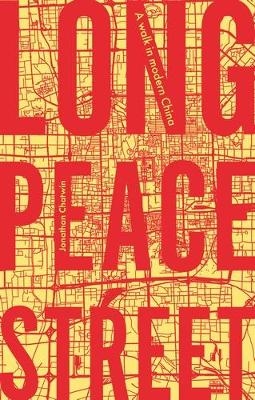
Long Peace Street
Manchester University Press (Verlag)
978-1-5261-5173-5 (ISBN)
Through the centre of China’s historic capital, Long Peace Street cuts a long, arrow-straight line. It divides the Forbidden City, home to generations of Chinese emperors, from Tiananmen Square, the vast granite square constructed to glorify a New China under Communist rule. To walk the street is to travel through the story of China’s recent past, wandering among its physical relics and hearing echoes of its dramas.
Long Peace Street recounts a journey in modern China, a walk of twenty miles across Beijing offering a very personal encounter with the life of the capital’s streets. At the same time, it takes the reader on a journey through the city’s recent history, telling the story of how the present and future of the world’s rising superpower has been shaped by its tumultuous past, from the demise of the last imperial dynasty in 1912 through to the present day. -- .
Jonathan Chatwin is a travel writer and journalist. His essays and articles on Chinese history and culture have been published by CNN, the South China Morning Post and the Los Angeles Review of Books amongst other publications. He is the author of Anywhere Out of the World, a literary biography of the traveller and writer Bruce Chatwin. He has lived and travelled widely in China. -- .
Introduction
Day one: Shougang Iron and Steel to Tiananmen
1 Capital Iron and Steel – origins – the Great Leap Forward – a bad neighbour – future plans
2 New suburbia – the city in history – the hutong – Shijingshan Amusement Park
3 Change – ring roads and the New Beijing – Great Olympics
4 Babaoshan ghosts – the cemetery – the life of Peng Dehuai – return to Hunan
5 A diversion – straightness – the road as metaphor
6 Military markings – Tomb of the Princess – new regime, new capital? – the Military Museum
7 Diaoyutai State Guesthouse – December 1980 – ‘To Rebel is Justified’ – Chairman Mao’s dog
8 Big roofs – Capital Museum – pailou – some history
9 Muxidi Bridge – petitions and protests – May Fourth – Democracy Movement – 1976 – 1978 – 1989 – the aftermath
10 Rainbows – walls, walls, and yet again walls – breaches – New Year’s Day in Xi’an – demolition – socialist core values
11 A hungry refrain – little grey streets – reform and opening-up – state owned enterprises
12 An assassination – Middle and Southern Seas – imperial pretensions – Xinhuamen – paranoia – hidden places – Mao at Zhongnanhai
Day two: Tiananmen to Sihui Dong subway station
13 The middle of the Middle Kingdom – hidden tales of Tiananmen – the Great Helmsman
14 A walk to Tiananmen – into the Forbidden City – intruders
15 Four days in the Forbidden City
16 Out of the Forbidden City – scholar trees – dislocation – destruction – impressions of Beijing – going native – Legation Street today – fireworks over Tiananmen
17 The man who died twice – Wangfujing – a literary traveller – the end of the Qing – Morrison and Yuan Shikai – a sad coda – Palm Sunday in Sidmouth
18 Oriental Plaza – walking in cities – the Imperial Observatory – origins of the Chinese calendar – the Jesuits – the Republican calendar – time in modern China
19 Outside the wall – the Grand Canal and the eastern suburbs – 22nd August 1967 – all palaces are temporary palaces – Forsan et haec olim – red
20 One city – the east is rich – weird architecture – mall life – underground
21 G103 – the story of a nation – the end
Epilogue
Index -- .
| Erscheinungsdatum | 10.05.2021 |
|---|---|
| Zusatzinfo | 1 Maps |
| Verlagsort | Manchester |
| Sprache | englisch |
| Maße | 138 x 216 mm |
| Gewicht | 445 g |
| Themenwelt | Reisen ► Reiseberichte ► Asien |
| Geschichte ► Teilgebiete der Geschichte ► Kulturgeschichte | |
| Sozialwissenschaften ► Ethnologie | |
| Sozialwissenschaften ► Soziologie | |
| ISBN-10 | 1-5261-5173-1 / 1526151731 |
| ISBN-13 | 978-1-5261-5173-5 / 9781526151735 |
| Zustand | Neuware |
| Haben Sie eine Frage zum Produkt? |
aus dem Bereich


